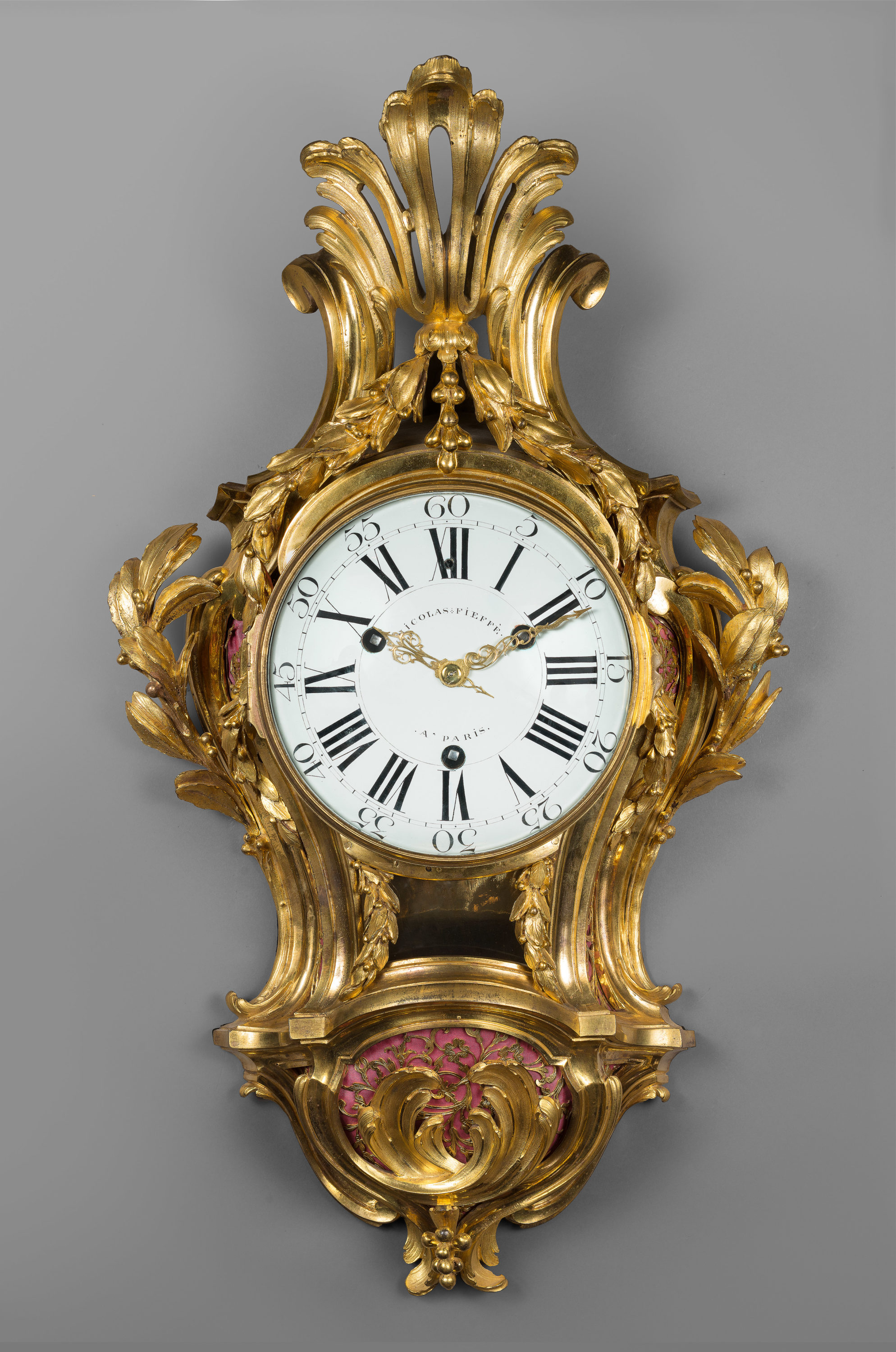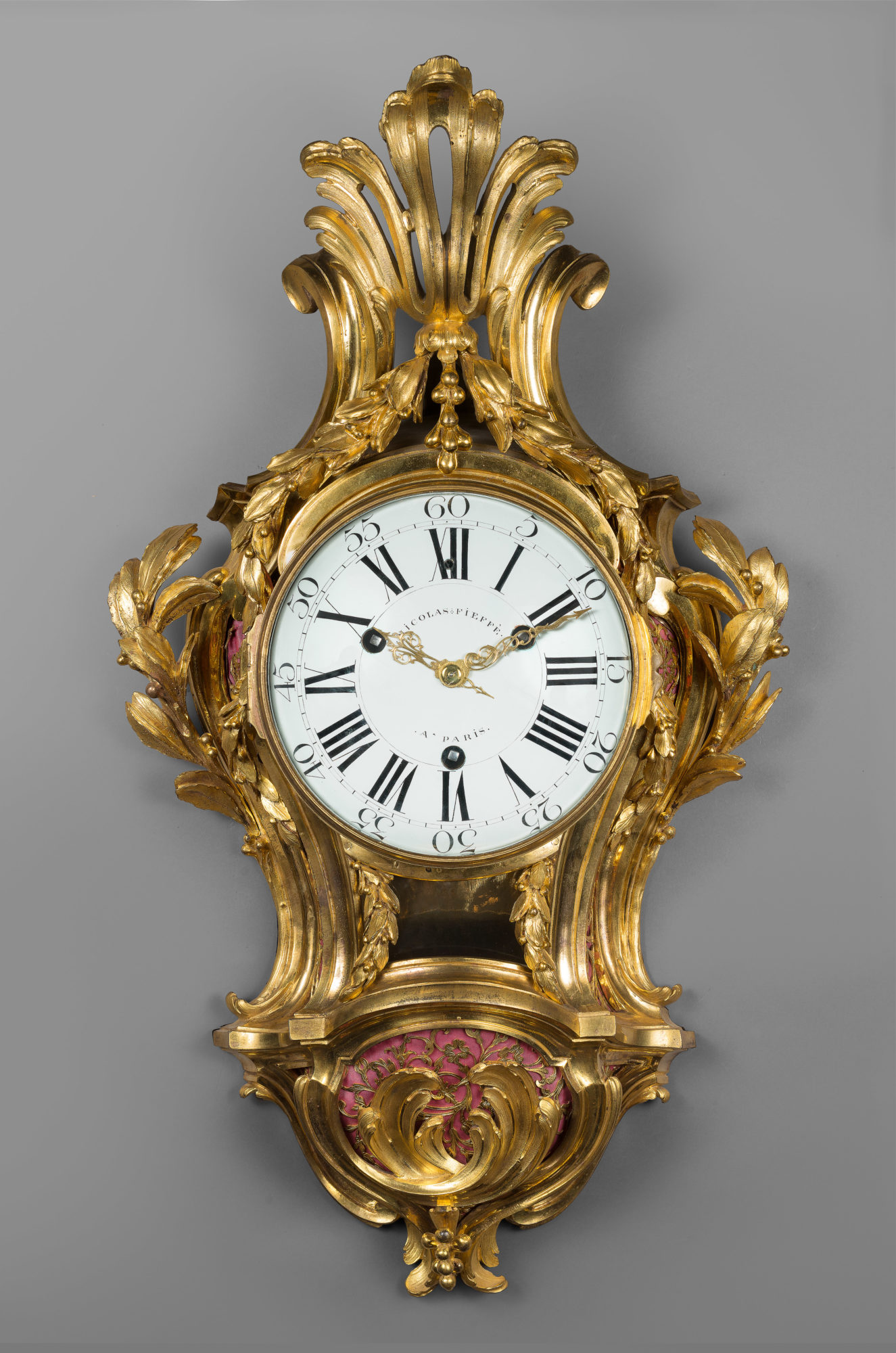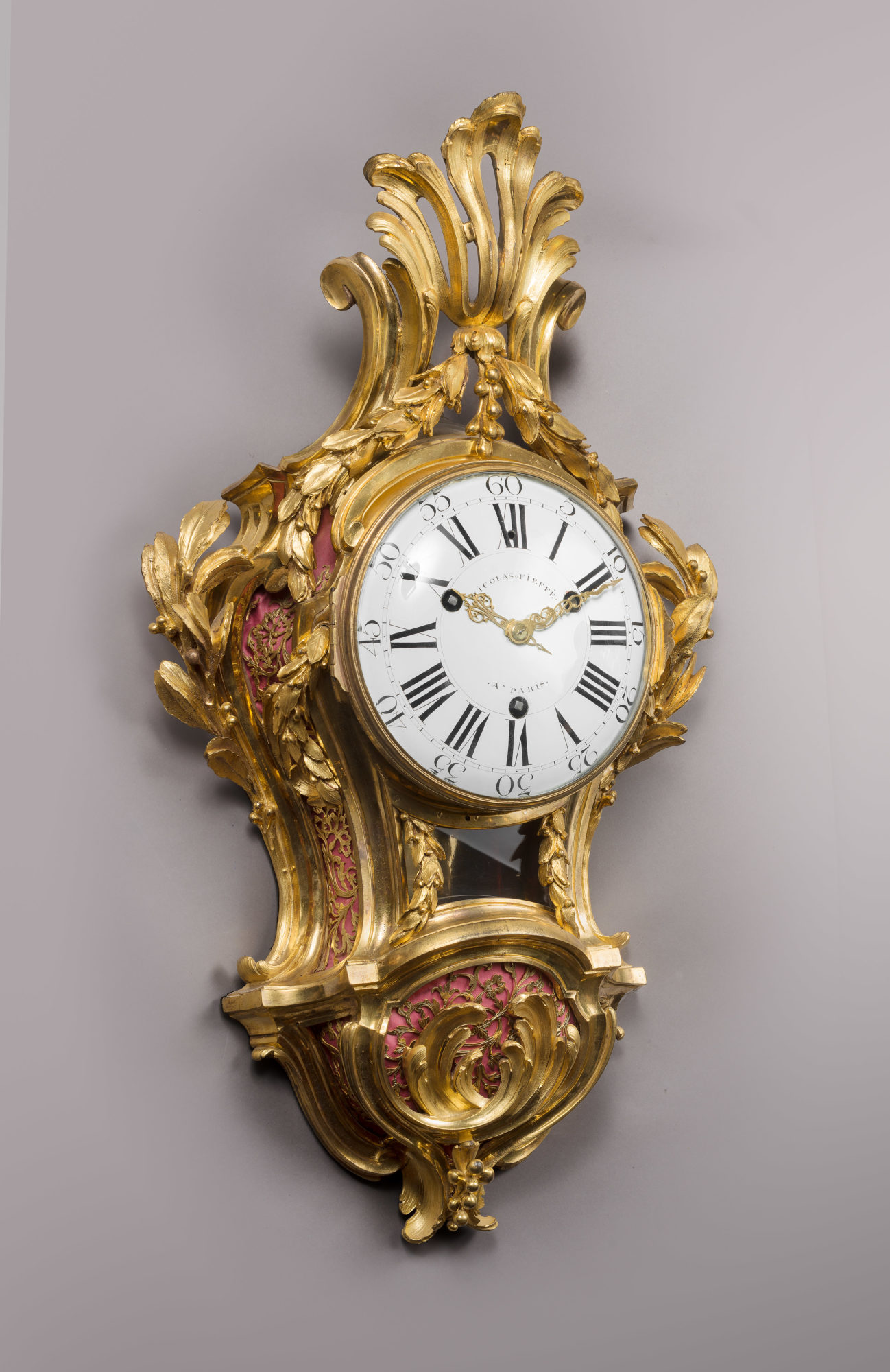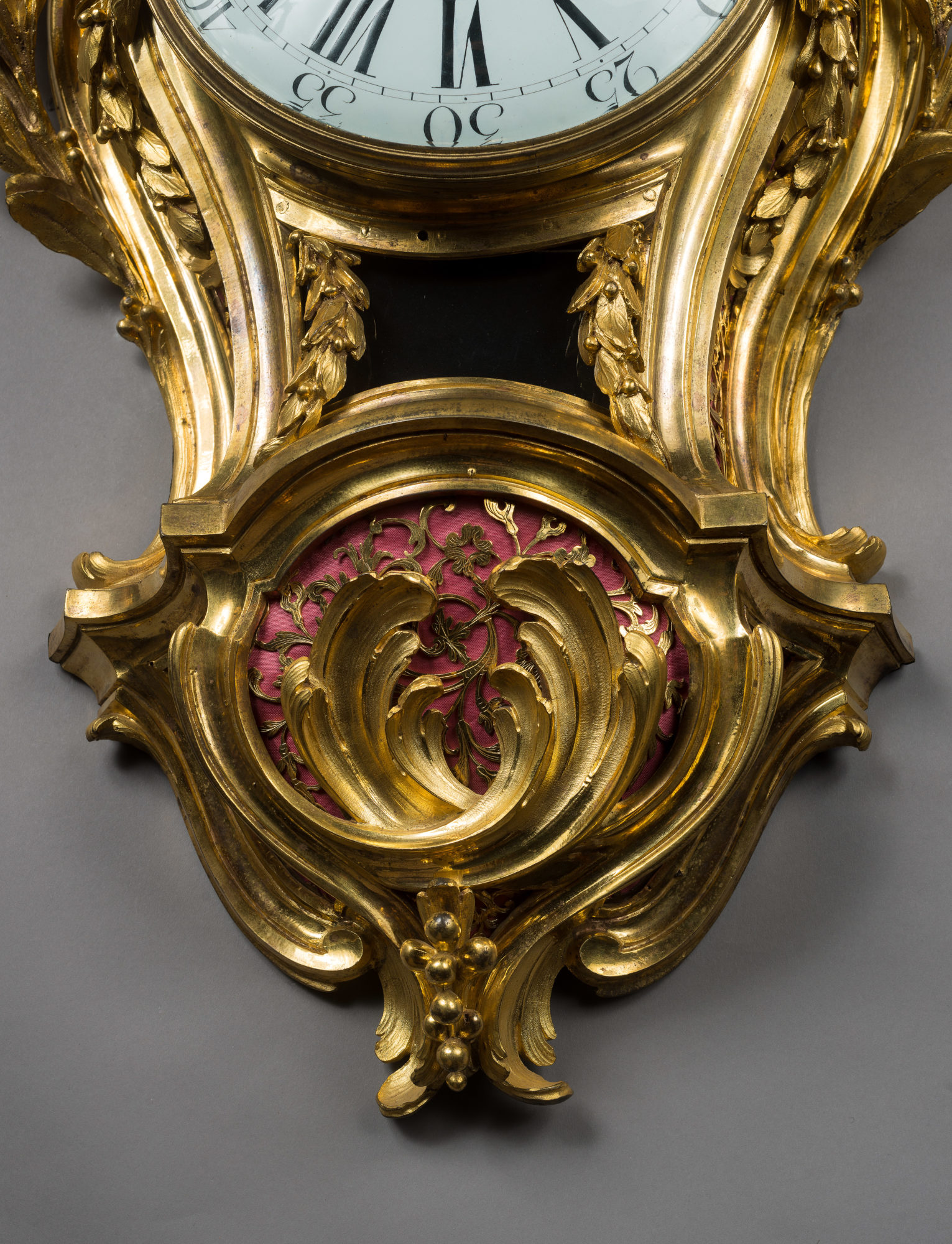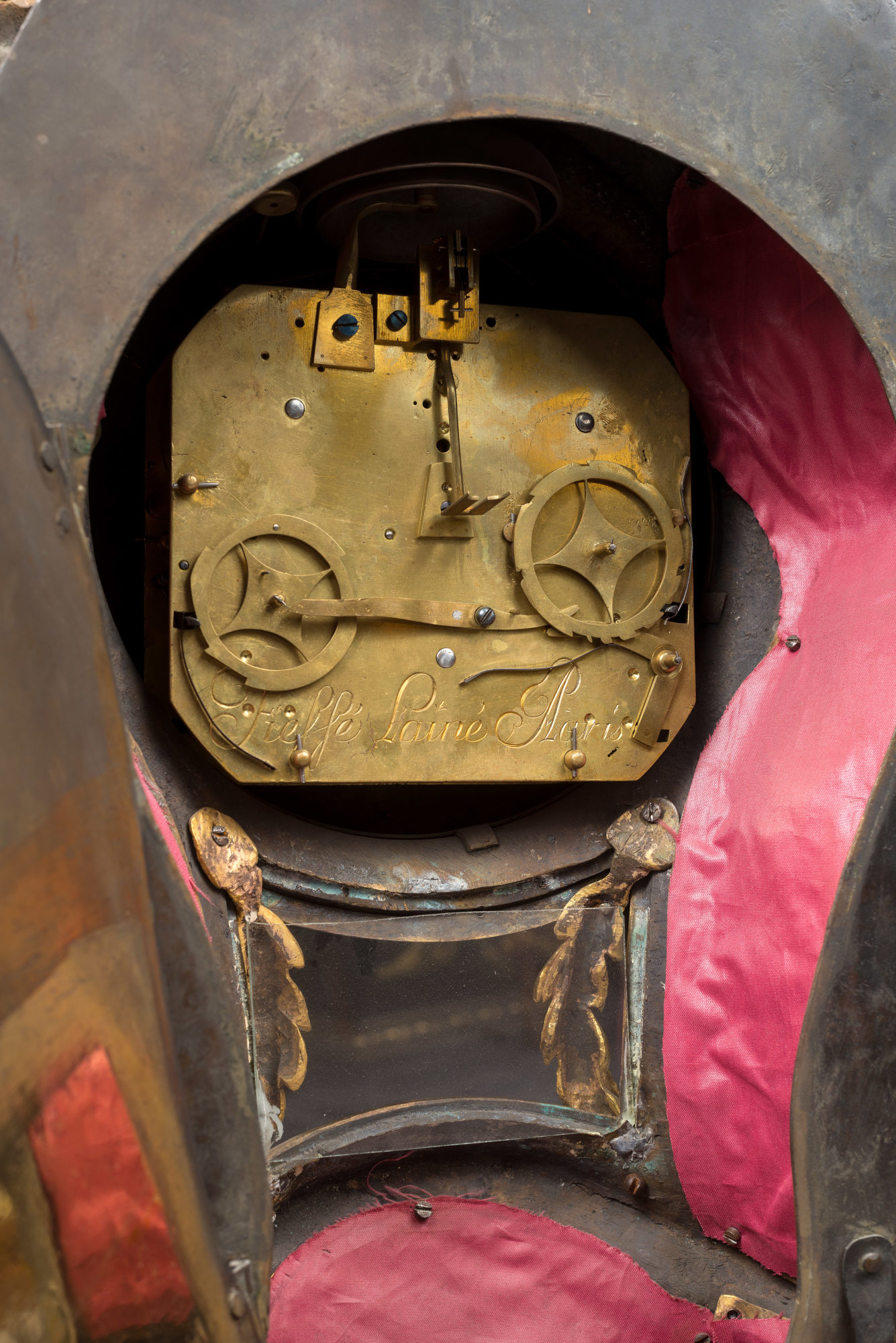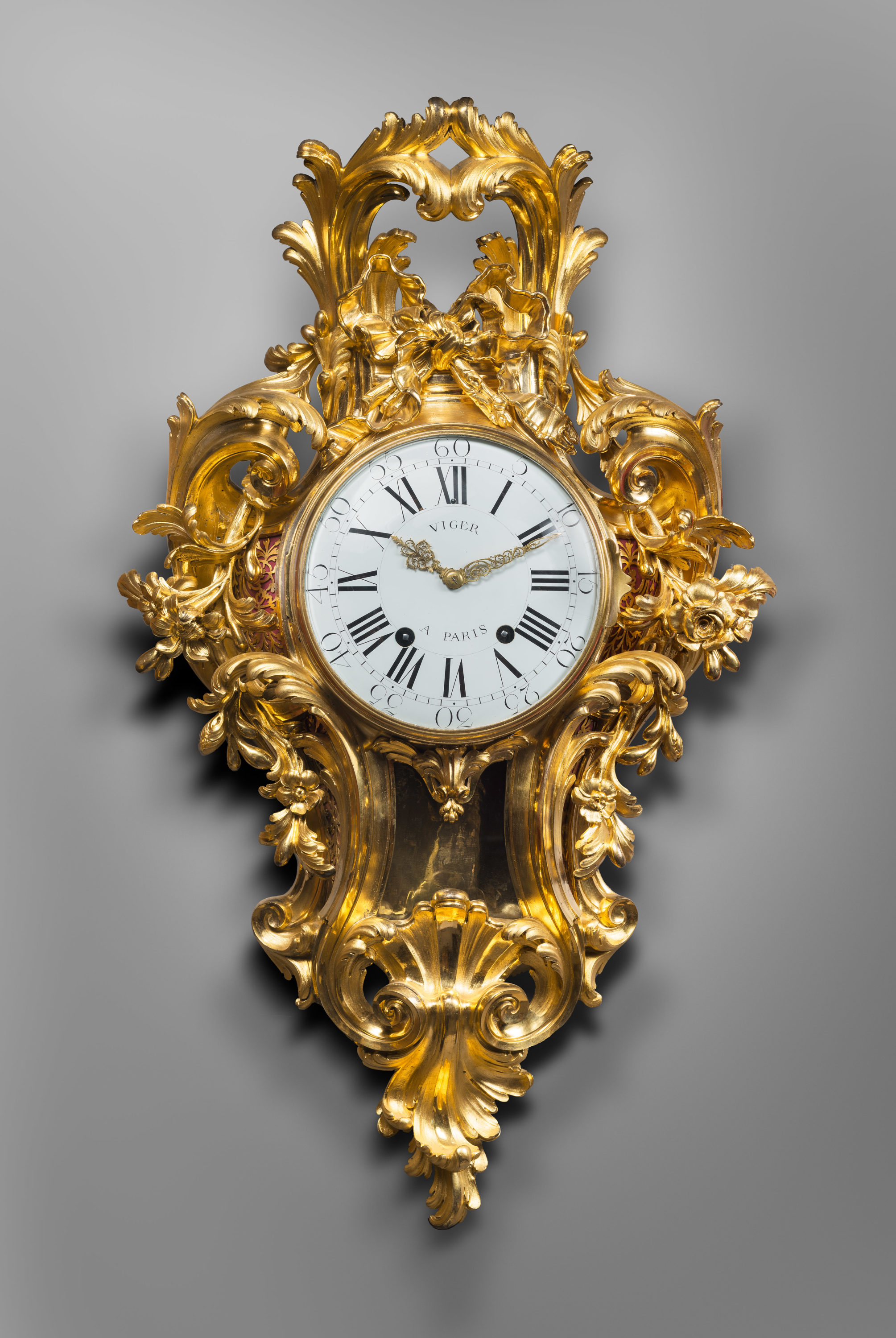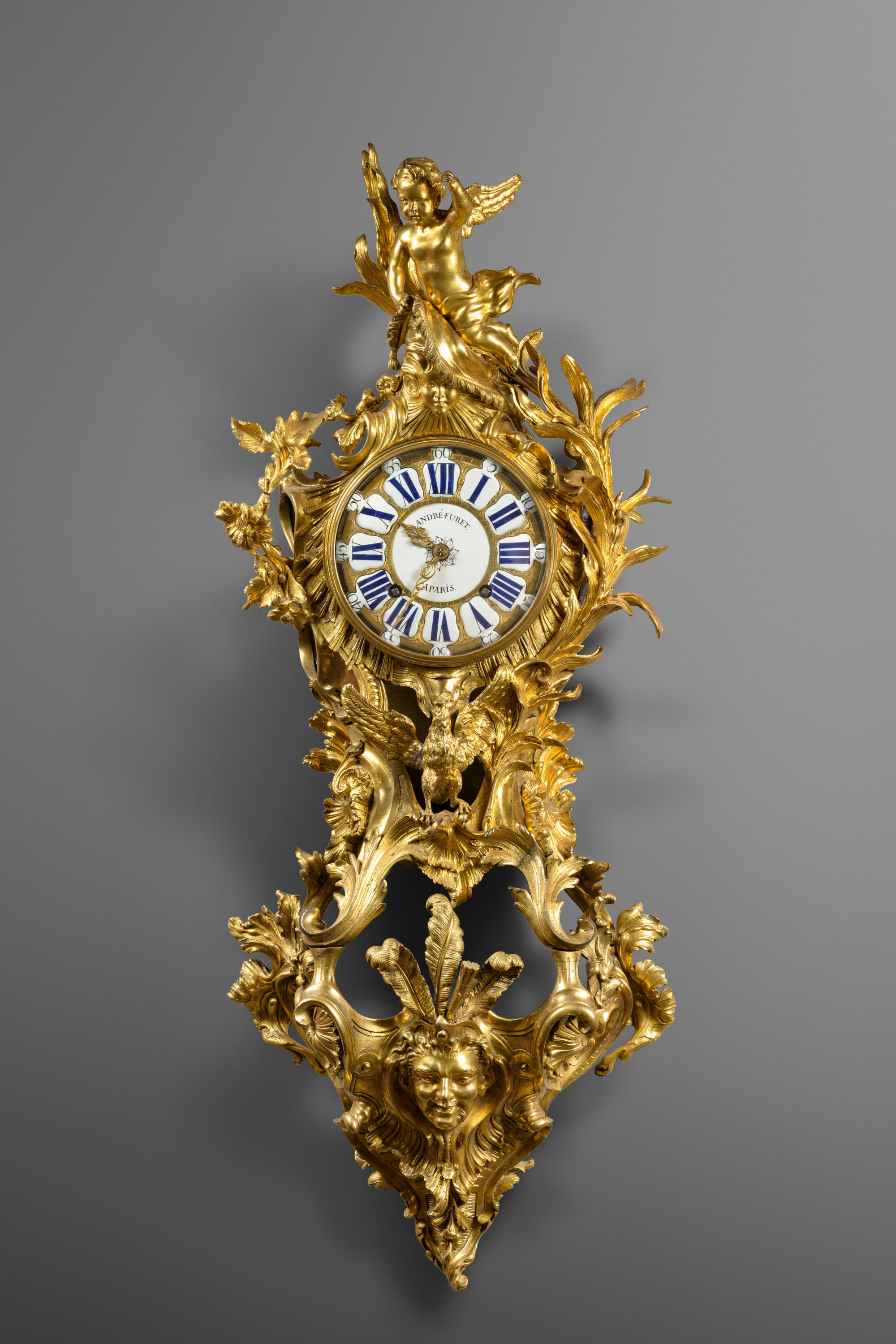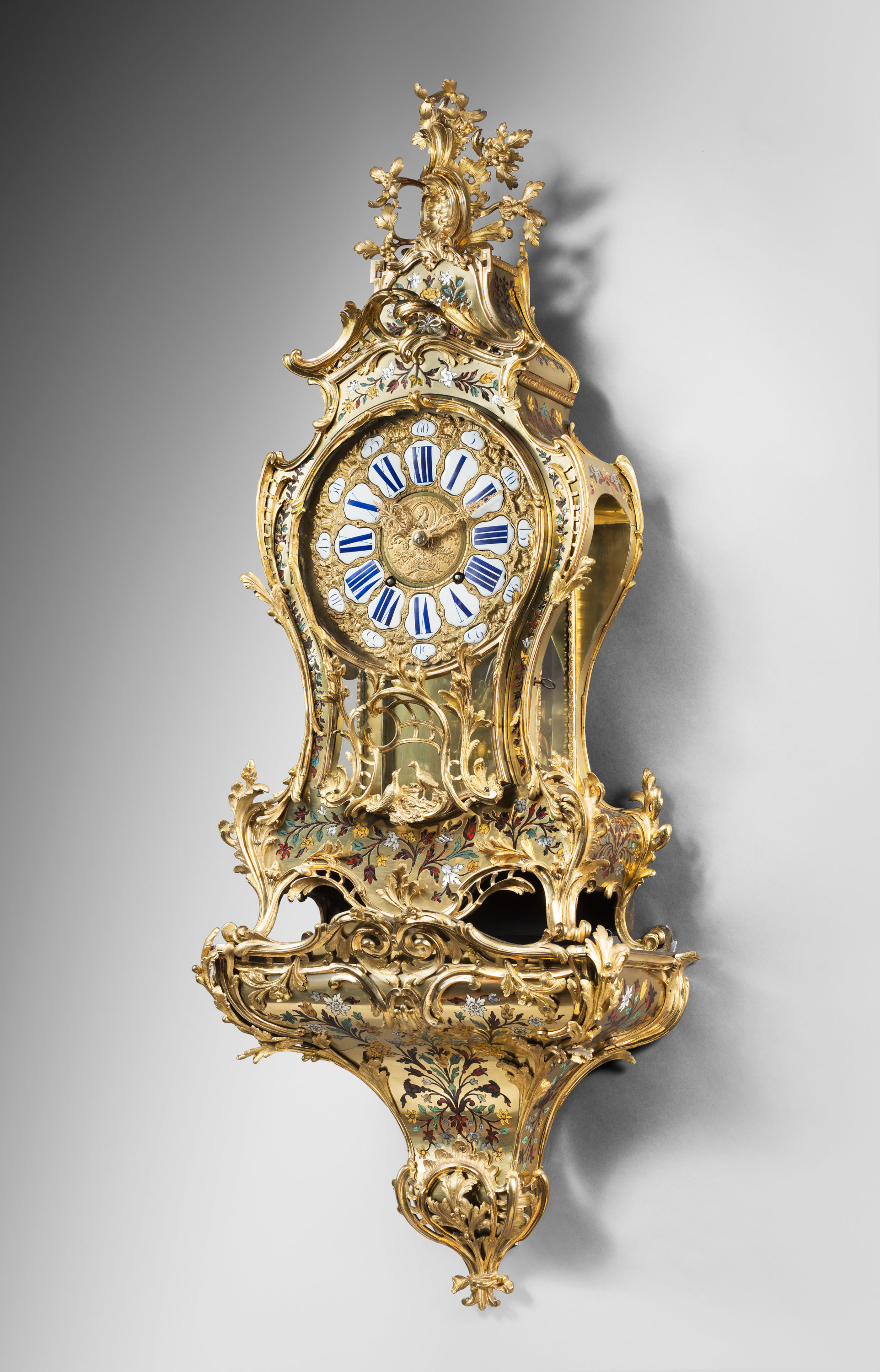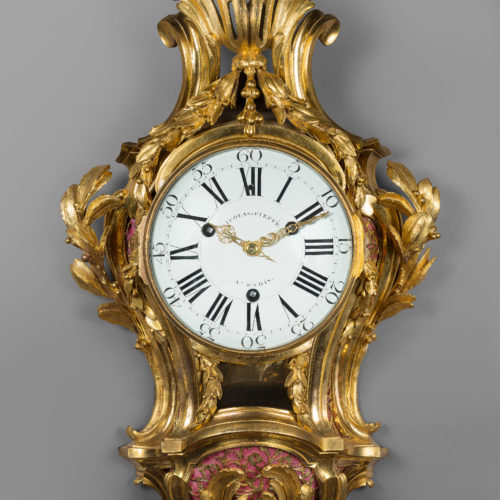Important Chased Gilt Bronze Wall Cartel
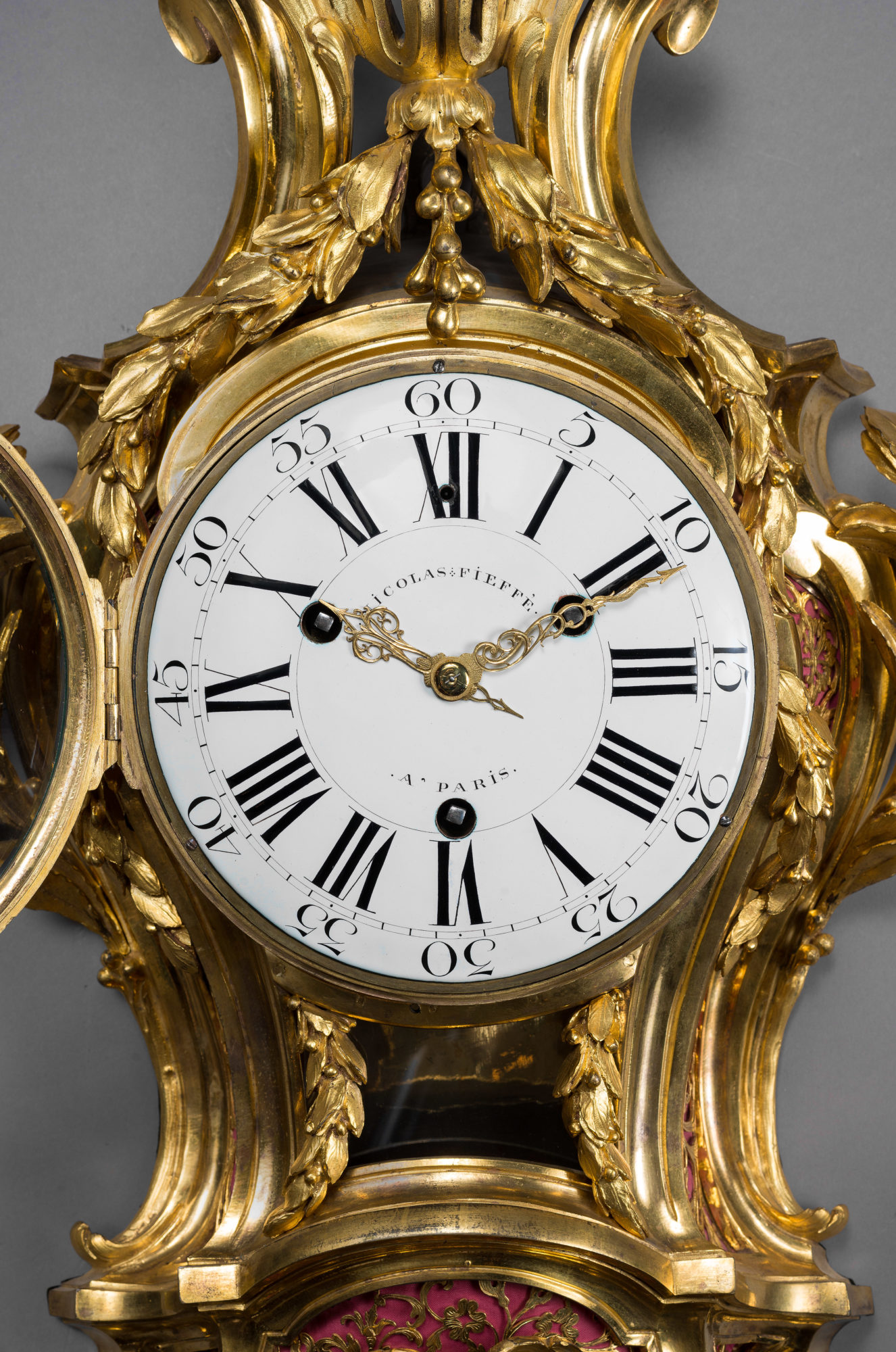
Case Attributed to Jean-Joseph de Saint-Germain
Paris, Louis XV period, circa 1755-1760
The enamel dial, signed “Nicolas Fieffé à Paris”, indicates the hours in Roman numerals and the minutes in Arabic numerals, by means of two pierced gilt bronze hands. The finely chased waisted gilt bronze case features foliage and scrolling in its lower portion, and wide leaves, scrolls, and olive and laurel leaf garlands throughout. The case is surmounted by a double scroll centred by a large pierced leaf. The present cartel strikes the hours, half hours and quarter hours.
Discover our entire collection of antique cartel clocks for sale online or at the gallery.
This clock is one of the finest examples of the late Louis XV rococo style. Its sinuous lines have been tamed, as can be seen from the symmetrical treatment and the presence of certain decorative elements, such as the laurel garlands, which point toward the neoclassical style in favour during the reign of Louis XVI. This tendency is evident as well in a Sèvres porcelain clock today in the Louvre museum, which is said to have formerly belonged to the Marquise de Pompadour (illustrated in the exhibition catalogue Un défi au goût, 50 ans de création à la manufacture royale de Sèvres (1740-1793), Paris, 1997, p. 77). The excellent quality of the gilding and indicate they are the work of an exceptionally talented bronzier, probably Jean-Joseph de Saint-Germain. Our attribution to Saint-Germain is based on a comparison with a stylistically similar cartel signed Saint-Germain, one example of which is in the Musée Carnavalet in Paris (formerly in the Bouvier collection).
Nicolas-Jean Fieffé (? - 1762)
The son of the well-known clockmaker Jean-Jacques Fieffé, he was made master horologist in 1752. He practiced for only approximately a decade, producing only a handful of pieces, all of excellent quality. Nicolas-Jean Fieffé was able to benefit from the professional network that his father had developed over the course of several decades. This gave him access to the finest artisans in Paris, particularly the bronze worker Saint-Germain.
Jean-Joseph de Saint-Germain (1719 - 1791)
He was probably the most renowned Parisian of the mid 18th century. Active as of 1742, he did become a master craftsman until July 1748. He became famous for his many clock and cartel cases, such as his Diana the Huntress (an example is in the Louvre Museum), the clock supported by two Chinamen (a similar example is in the Musée des Arts décoratifs in Lyon), as well as several clocks based on animal themes, including elephant and rhinoceros clocks (an example in the Louvre Museum). In the early 1760’s he played an important role in the renewal of the French decorative arts and the development of the Neo-classical style, an important example of which may be seen in his Genius of Denmark clock, made for Frederic V and based on a model by Augustin Pajou (1765, in the Amalienborg Palace, Copenhagen). Saint-Germain also made several clocks inspired by the theme of Learning, or Study, based on a model by Louis-Félix de La Rue (examples in the Louvre Museum, the Gulbenkian Foundation, Lisbon, and the Metropolitan Museum in New York). Along with his clock cases, Saint-Germain also made bronze furniture mounts, such as fire dogs, wall lights, and candelabra. His entire body of work bears witness to his remarkable skills as a chaser and bronzeworker, as well as to his extraordinary creativity. He retired in 1776.
Discover our entire collection of rare clocks on La Pendulerie Paris.
